관계부사 예문
관계부사란 두 문장을 연결하는 역할을 하는 부사입니다. 보통 명사를 수식하는 역할을 하며, 이에 따라 명사를 가리키는 역할을 하는 관계대명사와 함께 사용됩니다. 관계부사는 문장을 좀 더 정확하고 명확하게 만들어 줄 수 있으며, 복잡하고 긴 문장을 간결하게 표현할 수 있도록 도와줍니다.
관계부사의 역할 및 기능
관계부사는 주로 두 문장을 연결하여 더 정확하고 명확한 문장을 만들어 줍니다. 따라서 관계부사가 사용된 문장은 대체로 두 문장을 더불어 하나의 문장으로 연결하고 있습니다. 또한, 관계부사는 명사를 수식하는 역할을 하며, 이에 따라서 문장에서 특정 대상을 가리키거나 명확하게 정해진 대상을 나타냅니다.
관계부사의 종류와 예시
관계부사에는 다양한 종류가 있습니다. 그 중에서도 가장 많이 사용되는 것은 where, when, why, how, that, which, who, whom, whose 등이 있습니다.
– where: 장소를 나타내는 관계부사입니다. ex) Do you remember the restaurant where we had dinner last night?
– when: 시간을 나타내는 관계부사입니다. ex) I still remember the day when I met her for the first time.
– why: 이유를 나타내는 관계부사입니다. ex) He didn’t tell me the reason why he had to leave early.
– how: 방식을 나타내는 관계부사입니다. ex) She explained to me how she solved the problem.
– that: 주로 명사가 없는 경우에 사용되며, 대상이 명확한 경우를 가리킵니다. ex) The book that I bought yesterday is really interesting.
– which: 주로 명사가 있는 경우에 사용되며, 대상이 모호한 경우를 가리킵니다. ex) I can’t find the pen which I used for the test yesterday.
– who: 사람을 나타내는 관계부사입니다. ex) The woman who is sitting next to me is my friend.
– whom: 문장에서 목적어로 사용되는 사람을 나타내는 관계부사입니다. ex) The person whom I interviewed yesterday was very rude.
– whose: 소유를 나타내는 관계부사입니다. ex) Do you know the man whose car was stolen last night?
관계부사의 사용 방법
관계부사는 주로 두 문장을 연결하여 더 정확하고 명확한 문장을 만드는 데 사용됩니다. 따라서 관계부사는 주로 명사를 수식하는 형태로 사용됩니다. 예를 들어, “The book that I read yesterday was really interesting”와 같이, that이라는 관계부사가 사용된 경우, ‘I read yesterday’와 ‘the book’이라는 두 문장이 하나로 연결되어 하나의 문장을 만들어 내는 것입니다.
관계부사를 이용한 복합 문장 예시
– The restaurant where we had dinner last night was really crowded.
– The day when I met her for the first time was a beautiful day.
– He didn’t tell me the reason why he had to leave early.
– She showed me how she made the cake.
– The movie that I watched last night was really interesting.
– I can’t find the book which I borrowed from the library last week.
– The doctor who treated my father was very kind.
– The woman whom I met at the party was from France.
– Do you know the man whose car was parked in front of the school gate?
관계부사의 중요성과 활용성
관계부사는 문장을 더 정확하고 명확하게 만드는 데 큰 역할을 합니다. 특히, 명확한 대상을 가리키기 위해서는 관계부사를 반드시 사용해야 합니다. 또한, 관계부사를 사용함으로써 복잡하고 긴 문장을 간결하게 표현할 수 있으며, 읽는 사람에게 더 쉽게 전달할 수 있게 됩니다.
관계부사와 관계대명사의 차이
관계대명사는 관계절에서 주로 사용되며, 보통 앞에 있는 명사를 대체하여 사용됩니다. 이에 비해 관계부사는 두 개의 문장을 연결하는 역할을 하기 때문에, 관계절을 대신하지는 않습니다. 또한, 관계대명사는 주로 객관적이고 명확한 대상을 나타내지만, 관계부사는 상황에 따라서 좀 더 감정적이거나 주관적인 느낌을 전달할 수 있습니다.
관계부사의 오류 예방 방법
관계부사의 오류를 방지하기 위해서는 몇 가지 규칙을 지켜야 합니다. 먼저, 관계부사가 사용되는 문장은 항상 정확하고 명확하게 작성되어야 합니다. 또한, 문장에서 관계부사의 기능과 역할을 명확하게 파악한 다음에 사용해야 합니다.
– 관계부사 완전한 문장: 관계부사를 사용한 문장은 두 개의 문장을 하나로 연결하는 역할을 하기 때문에, 양쪽의 문장이 완전한 문장인지 반드시 확인해야 합니다.
– 관계부사 where: where 관계부사는 장소를 나타내는 관계부사로, 문장에서 명확하게 대상이나 장소를 지정해 주어야 합니다.
– 관계부사 종류: 관계부사의 종류와 역할을 확실히 파악하고, 해당하는 관계부사를 올바르게 사용해야 합니다.
– 관계부사 생략: 관계부사를 생략하는 경우도 있지만, 관계부사를 생략하면 문장의 뜻이 모호해질 수 있으므로, 가능한한 생략하지 않는 것이 좋습니다.
– 관계부사 역할: 다른 부사와 마찬가지로, 관계부사도 자신이 수식하는 대상을 확실히 파악하고, 해당 대상과 일치하도록 사용해야 합니다.
– what 관계대명사 관계부사: what 관계대명사와 관계부사의 차이점이 명확하지 않은 경우가 있습니다. 이 경우, what이 관계대명사인지 관계부사인지를 파악하여 올바르게 사용해야 합니다.
– 관계부사 영어로: 관계부사는 영어 문장에서 매우 중요한 역할을 하므로, 영어문장을 작성할 때 반드시 고려해야 합니다.
– 관계부사 선행사관계부사 예문: I don’t know the reason why he didn’t come to the party.
FAQs
Q. 관계부사란 무엇인가요?
A. 관계부사는 두 문장을 연결하여 더 정확하고 명확한 문장을 만드는 역할을 하는 부사입니다.
Q. 관계부사의 역할과 기능은 무엇인가요?
A. 관계부사는 문장을 연결하는 역할을 하며, 보통 명사를 수식하는 역할을 합니다. 이로 인해 문장에서 특정 대상이나 명확하게 정해진 대상을 나타냅니다.
Q. 관계부사에는 어떤 종류가 있나요?
A. 관계부사에는 where, when, why, how, that, which, who, whom, whose 등이 있습니다.
Q. 관계부사를 사용하는 방법은 무엇인가요?
A. 관계부사는 주로 명사를 수식하는 형태로 사용됩니다. 예를 들어, “The book that I read yesterday was really interesting”와 같이, that이라는 관계부사가 사용된 경우, ‘I read yesterday’와 ‘the book’이라는 두 문장이 하나로 연결되어 하나의 문장을 만들어 내는 것입니다.
Q. 관계부사와 관계대명사의 차이는 무엇인가요?
A. 관계대명사는 관계절에서 주로 사용되며, 보통 앞에 있는 명사를 대체하여 사용됩니다. 이에 비해 관계부사는 두 개의 문장을 연결하는 역할을 하기 때문에, 관계절을 대신하지는 않습니다.
Q. 관계부사의 오류를 예방하기 위해서는 어떻게 해야 하나요?
A. 관계부사의 오류를 예방하려면, 관계부사가 사용된 문장은 항상 정확하고 명확하게 작성되어야 합니다. 또한, 문장에서 관계부사의 기능과 역할을 명확하게 파악한 다음에 사용해야 합니다.
사용자가 검색한 키워드: 관계부사 예문 관계부사 완전한 문장, 관계부사 where, 관계부사 종류, 관계부사 생략, 관계부사 역할, what 관계대명사 관계부사, 관계부사 영어로, 관계부사 선행사
Categories: Top 86 관계부사 예문
[이나클라쓰] 한 번 보면 전두엽에 박히는 관계부사 15분 완벽정리
여기에서 자세히 보기: c3.castu.org
관계부사 완전한 문장
What are 관계부사 완전한 문장?
Firstly, let’s break down the term 관계부사 완전한 문장 into its constituent parts. In Korean, 관계부사 is a relative adverb. It functions in the same way as a relative pronoun in English, as it links clauses together and provides additional information. 완전한 문장, on the other hand, refers to a complete sentence. So, when we combine these two concepts, we get a complete sentence that uses a relative adverb to link clauses.
In practice, this means using words like “when”, “where”, and “why” to establish a relationship between two parts of a sentence. For example, we might say “I met my friend at the cafe,” which is a simple statement. However, if we add a relative adverb, we can make it more complex and meaningful. We might say “I met my friend at the cafe where we had our first date,” which adds extra context and information.
How are 관계부사 완전한 문장 used in Korean?
Relative adverbs are used in Korean to link clauses together and provide additional information about a subject or object. They allow speakers to add more detail to a sentence and create more nuanced and sophisticated language.
To form a sentence using a relative adverb, we need to follow a few steps. Firstly, we need to identify the two clauses we want to link together. These clauses should both be complete sentences in and of themselves, as we are linking their meanings together rather than completing a sentence. Secondly, we need to choose the appropriate relative adverb for the situation.
There are a few different relative adverbs in Korean that we can use, depending on the situation. Some of the most common ones include:
– When (언제)
– Where (어디)
– Why (왜)
– How (어떻게)
Once we have chosen an appropriate relative adverb, we can then use it to link the two clauses together. The relative adverb acts as a bridge between the two thoughts, allowing us to create a more complex sentence with more meaning.
For example, let’s say we wanted to say “I met my friend at the cafe where we first met.” In Korean, we could say:
저는 제 친구를 처음 만났던 카페에서 그를 만났어요.
Jeoneun je chingureul cheoeum mannatdeon kapeeseo geureul mannasseoyo.
In this sentence, we have used the relative adverb “where” (어디서) to link the two clauses together. The first clause is “I met my friend at the cafe where we first met,” and the second clause is “I met him.” When we combine these two clauses using the relative adverb, we get a more complex sentence that includes more information and detail.
It’s worth noting that in Korean, relative adverbs come at the start of a sentence, rather than in the middle or at the end as they do in English. This is important to keep in mind, as it can change the structure of your sentences and make them sound more natural and fluent.
Examples of 관계부사 완전한 문장
To give you a better idea of how to use relative adverbs in Korean, let’s go through a few examples. We’ll use some of the most common relative adverbs to show you how they work in practice.
– When (언제)
When (언제) is used to talk about a specific time or moment. For example:
어제 나는 가족과 함께 밥을 먹을 때 행복했다.
Eoje naneun gajokgwa hamkke babeul meogeul ttae haengbokhaetda.
Yesterday, I was happy when I ate with my family.
– Where (어디)
Where (어디) is used to talk about a specific location or place. For example:
고양이는 문을 열 때 어디서든지 들어갈 준비가 돼 있다.
Goyangi-neun mun-eul yeol ttae eodiseodeunji deureogal junbiga dwae itda.
The cat is always ready to go inside wherever the door is open.
– Why (왜)
Why (왜) is used to explain a reason or purpose. For example:
나는 친구와 여행을 다녀왔을 때 왜 그렇게 피곤하지 않았을까?
Naneun chingugwa yeohaengeul danyeowasseul ttae wae geureohge pyeogonhaji anhatteulkka?
Why wasn’t I as tired after traveling with my friend?
– How (어떻게)
How (어떻게) is used to talk about a specific way or method of doing something. For example:
나는 어떻게 개발자가 됐을까?
Naneun eotteohge gaebaljaga dwaesseulkka?
How did I become a developer?
FAQs
Q: Are there any rules for where to place a relative adverb in Korean?
A: Yes, in Korean, relative adverbs should always be placed at the start of a sentence.
Q: Can I use more than one relative adverb in a sentence?
A: Yes, you can use multiple relative adverbs in a sentence to add extra detail and information. However, be careful not to make your sentences too long or complicated.
Q: Are there any situations where it’s inappropriate to use a relative adverb in Korean?
A: No, you can use relative adverbs in almost any situation in Korean. They are a versatile tool that can be used to make your language more descriptive and nuanced.
In conclusion, 관계부사 완전한 문장 are an important tool for Korean speakers who want to create more detailed and nuanced sentences. By using relative adverbs to link clauses together, speakers can add extra information and detail to their language. Whether you are a beginner or an advanced speaker, using relative adverbs in Korean can help you sound more fluent and natural. Remember to place them at the start of your sentences and experiment with different ones to create the perfect sentence for any situation.
관계부사 where
In this article, we will explore the different types of 관계부사 and how they function in Korean sentences. We will also provide some examples of their usage and answer frequently asked questions related to their use.
Types of 관계부사
In the Korean language, there are two main categories of 관계부사:
1. 관형사 (Gwan-yeong-sa)
2. 조사 (Jo-sa)
Let’s explore each of these in more detail.
1. 관형사 (Gwan-yeong-sa)
Gwan-yeong-sa (adjectival modifiers) are words that function to describe or modify a noun in a sentence. They are similar to adjectives in English, but unlike adjectives, Gwan-yeong-sa are placed before the noun they modify. In a sentence, Gwan-yeong-sa can be used as a direct modifier, replacing a noun, or as a predicate modifier, modifying the verb.
Here are some examples of Gwan-yeong-sa in action:
– 큰 개가 자리를 뺐다. (Keun gae-ga ja-ri-reul bbaet-da)
In this sentence, the adjective modifier 큰 (keun), which means “big,” modifies the noun 개 (gae), which means “dog.”
– 새 옷을 입었어요. (Sae ot-eul ib-eos-seo-yo.)
In this sentence, the adjective modifier 새 (sae), which means “new,” modifies the noun 옷 (ot), which means “clothes.”
2. 조사 (Jo-sa)
Jo-sa (particles) mark the grammatical relationship between words in a sentence. They are used to indicate a variety of different relationships, including the subject of the sentence, the verb or adjective used to describe it, and its location or destination. Jo-sa can also be used to connect clauses and sentences.
Here are some examples of Jo-sa in action:
– 집에 가서 잠을 자요. (Jib-e ga-seo jam-eul ja-yo.)
In this sentence, the particle 조에 (joe) is used to indicate that the verb 자다 (jada), which means “to sleep,” is being performed at the location indicated by 집 (jib), which means “home.”
– 저는 저녁을 먹었습니다. (Jeoneun jeo-nyeok-eul meog-eoss-seum-ni-da.)
In this sentence, the particle 는 (neun) is used to indicate the subject of the sentence (저, jeo), and to mark the direct object of the verb 먹다 (meokda), which means “to eat.”
How to use 관계부사 in Korean sentences
Now that we have explored the different types of 관계부사, let’s dive deeper into how they can be used in Korean sentences.
In general, sentence structure in Korean is subject-object-verb (SOV). Here is an example sentence in Korean: “저는 우체국에 편지를 보내요.” (Jeoneun u-chae-gug-e pyeon-ji-reul bonae-yo).
In this sentence, the subject is 저 (jeo), which means “I,” the object is 편지 (pyeon-ji), which means “letter,” and the verb is 보내다 (bonaeda), which means “to send.”
To add a 관계부사 to this sentence, we could modify it as follows: “우리 집에서 편지를 썼어요.” (Uri jib-eseo pyeon-ji-reul sseo-sseo-yo.)
In this sentence, we have replaced the subject with 우리 집 (uri jib), which means “our house,” and added the 관형사 에서 (eseo), which indicates the location where the action of 우리 집에서 쓰다 (uri jib-eseo sseuda), which means “to write in our house,” is taking place.
This sentence structure can be used to convey a variety of relationship dynamics between the subject, verb, and object, making it ideal for expressing nuanced or complex ideas.
FAQs about using 관계부사
1. Are there any rules for using 관형사 and 조사?
Yes, there are many rules for using both 관형사 and 조사 in Korean. However, over time these rules become more intuitive as you become more familiar with the language.
2. What are some common 관형사 in Korean?
Some common 관형사 in Korean include 큰 (keun), which means “big,” 작은 (jageun), which means “small,” 예쁜 (yeppeun), which means “pretty,” and 좋은 (jo-eun), which means “good.”
3. What are some common 조사 in Korean?
Some common 조사 in Korean include 을/를 (eul/reul), which marks a direct object, 에서 (eseo), which marks a location, and 에 (e), which also marks a location, but is used exclusively with verbs of location.
4. Is it possible to form a sentence without using any 관계부사?
Yes, it is possible to form a sentence without using any 관계부사, but it is much less common. Without using any 관계부사, the sentence can become less precise and can even be more confusing.
5. Are there any online resources available to help me learn about using 관계부사?
Yes, there are many online resources available to help you learn about using 관계부사. Some popular resources include online Korean language courses and language learning apps.
Conclusion
관계부사 are an essential part of the Korean language, helping to link words together and create clear and concise sentences. Whether you are a Korean language learner or simply seeking to improve your communication skills, understanding how to use these words is crucial. By mastering the different types of 관형사 and 조사, and learning how to use them in sentences, you can quickly become a more fluent and precise communicator in the Korean language.
관계부사 종류
Korean is a rich language that allows speakers a great deal of expressiveness. One of those ways is with 관계부사 (relative adverbs). Relative adverbs are words that modify nouns or pronouns by describing relationships. They connect clauses or phrases to give more detail or background information. In this article, we will discuss the five main types of relative adverbs in Korean: 어디, 어떻게, 언제, 누구, and 왜. We will also cover some frequently asked questions to clarify any misunderstandings about their usage.
Types of Relative Adverbs
어디 (Where)
어디 is a relative adverb that means where. It modifies a preceding noun or pronoun in a clause to identify the location or place in question. For example, “여기에서부터 어디로 가는 거예요?” (Where are you going from here?) or “그 여행지는 어디인가요?” (Where is the destination of your trip?).
어떻게 (How)
어떻게 is a relative adverb that means how. It modifies a preceding noun or pronoun in a clause to identify the manner or method in question. For example, “그녀는 어떻게 예쁜 것인가?” (How can she be so pretty?) or “이 단어를 어떻게 발음하나요?” (How do you pronounce this word?).
언제 (When)
언제 is a relative adverb that means when. It modifies a preceding noun or pronoun in a clause to identify the time or moment in question. For example, “그녀가 언제 나타났는지는 모르겠어요.” (I don’t know when she showed up.) or “이사를 언제 하나요?” (When are you moving?).
누구 (Who/Whom)
누구 is a relative adverb that means who or whom. It modifies a preceding noun or pronoun in a clause to identify the person or people in question. For example, “그녀는 누구와 함께 옵니까?” (Who is she with?) or “우리팀에서 누가 일을 잘할까요?” (Who is good at the job in our team?).
왜 (Why)
왜 is a relative adverb that means why. It modifies a preceding noun or pronoun in a clause to identify the reason or motivation in question. For example, “그렇게 많이 울던 이유는 왜인가요?” (Why were you crying so much?) or “왜 이렇게 선수들이 적은 건가요?” (Why are there so few players?).
FAQs
Q1: Can I use relative adverbs interchangeably in Korean sentences?
A1: No. You have to selectively use a proper relative adverb depending on the context of the sentence. Each relative adverb has its own function, and they cannot be substituted with one another.
Q2: Can relative adverbs be used in both formal and informal settings?
A2: Yes. Relative adverbs can be used in both formal and informal situations, but the level of politeness can change depending on the formality of the situation. In formal settings, you should use appropriate honorific verbs, or extra respectful forms and consider using more formal vocabulary.
Q3: Can relative adverbs be used to make complex sentences?
A3: Yes. Relative adverbs can be used to make complex sentences for a more detailed and informative explanation. By connecting phrases or clauses, relative adverbs allow speakers to tell more about nouns or pronouns in a sentence.
Q4: Are there any exceptions or irregularities in using relative adverbs in Korean?
A4: There are no significant exceptions or irregularities in using relative adverbs, but it is essential to watch out for the formal and age-based levels of politeness. When addressing someone older or in a formal setting, using more polite language is crucial, and vice versa is also true.
Q5: Are there any common mistakes that people make when using relative adverbs in Korean?
A5: Yes. One of the common mistakes people make is using the wrong relative adverb in a sentence. For example, using 어느 instead of 어떤 (both meaning “what kind of”) can alter the meaning of a sentence. Another common mistake is forgetting to use the appropriate honorific verb in formal settings, which can decrease the level of your politeness.
In conclusion, relative adverbs are an essential language feature in Korean that allow speakers to express complex thoughts and ideas. There are five main types of relative adverbs: 어디, 어떻게, 언제, 누구, and 왜, and it is essential to use the right one according to the context of the sentence. Though there are no significant exceptions or irregularities in using relative adverbs, speakers should be mindful of politeness levels and common mistakes to avoid errors. By mastering relative adverbs, Korean learners can improve their language fluency and expand their range of expression.
주제와 관련된 이미지 관계부사 예문
![[이나클라쓰] 한 번 보면 전두엽에 박히는 관계부사 15분 완벽정리 [이나클라쓰] 한 번 보면 전두엽에 박히는 관계부사 15분 완벽정리](https://c3.castu.org/wp-content/uploads/2023/06/hqdefault-293.jpg)
관계부사 예문 주제와 관련된 이미지 29개를 찾았습니다.
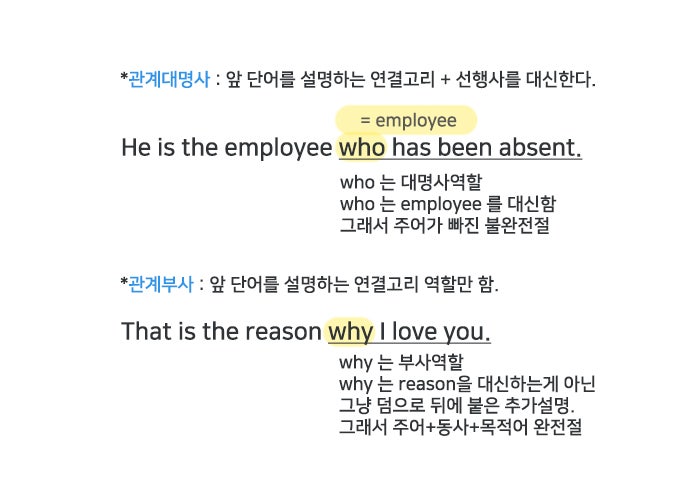
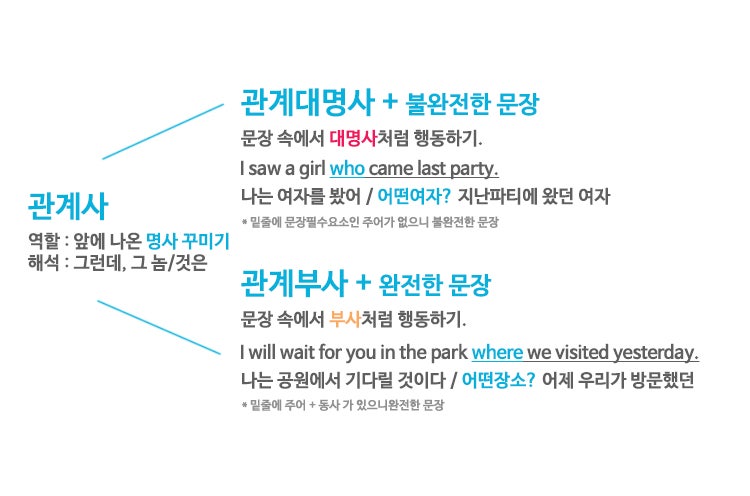




![DK 처럼] [문법! 예문으로 이해하기] 문법 23 - 2 관계부사 01 where when 선행사 관계부사생략 - YouTube Dk 처럼] [문법! 예문으로 이해하기] 문법 23 - 2 관계부사 01 Where When 선행사 관계부사생략 - Youtube](https://i.ytimg.com/vi/Z0mjjUGq46k/hqdefault.jpg)

![동탄영어 DTE] 듣고, 말하고, 쓰기 위한 패턴연습(77) - 복합관계부사 however가 이끄는 양보의 부사절(2) : 얼마나? (정도) : 네이버 블로그 동탄영어 Dte] 듣고, 말하고, 쓰기 위한 패턴연습(77) - 복합관계부사 However가 이끄는 양보의 부사절(2) : 얼마나? (정도) : 네이버 블로그](https://mblogthumb-phinf.pstatic.net/MjAxOTA5MTJfODQg/MDAxNTY4MjQxMDA4NTE5.CX_sc2fNaMeoneZmAVEt2thccWTwWirKil8zNimtlawg.du2fb56PWP86OEUp-J1TFq4D2WTU-qcDxYc6dk0o5Y4g.JPEG.davidcmham/%EB%B3%B5%ED%95%A9%EA%B4%80%EA%B3%84%EB%B6%80%EC%82%AC_however%EA%B0%80_%EC%9D%B4%EB%81%84%EB%8A%94_%EB%B6%80%EC%82%AC%EC%A0%88_%EC%98%88%EB%AC%B81.jpg?type=w800)

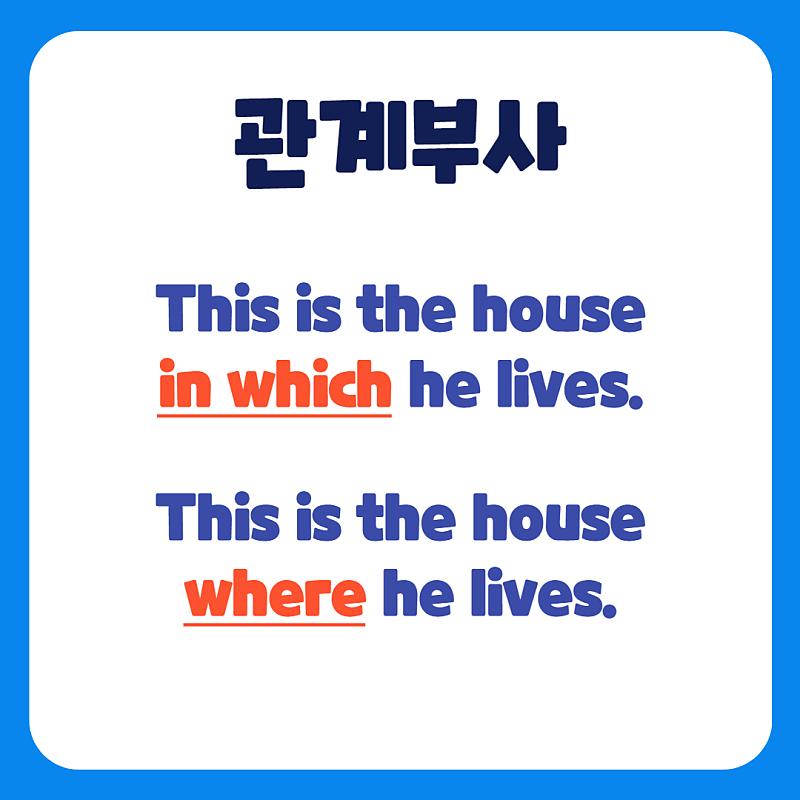

![관계부사 where의 선행사] 장소가 아닌 명사가 선행사로 오는 경우! - YouTube 관계부사 Where의 선행사] 장소가 아닌 명사가 선행사로 오는 경우! - Youtube](https://i.ytimg.com/vi/5gUozGHqnJY/maxresdefault.jpg)
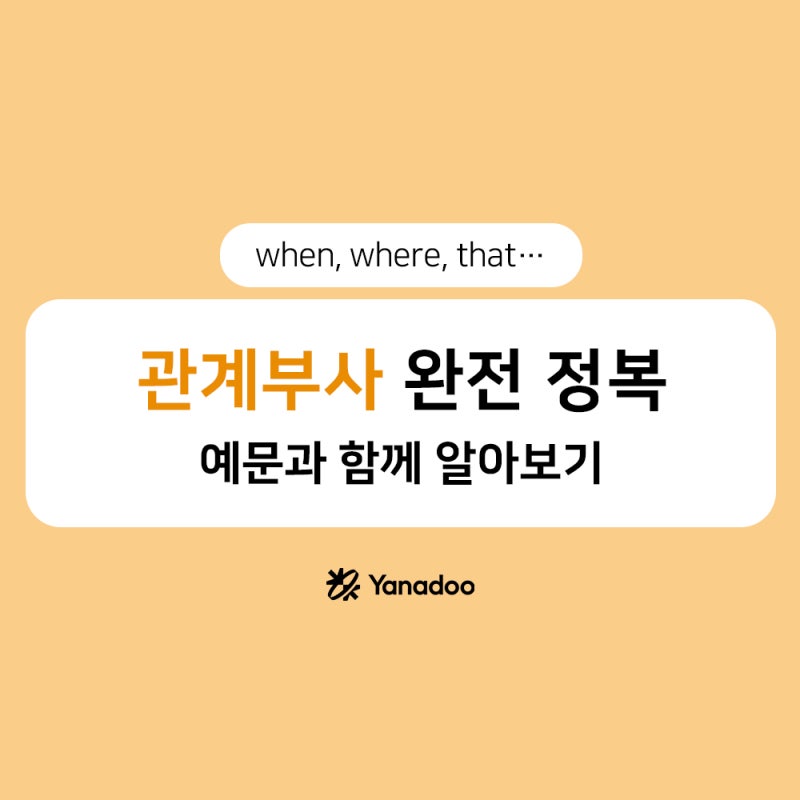
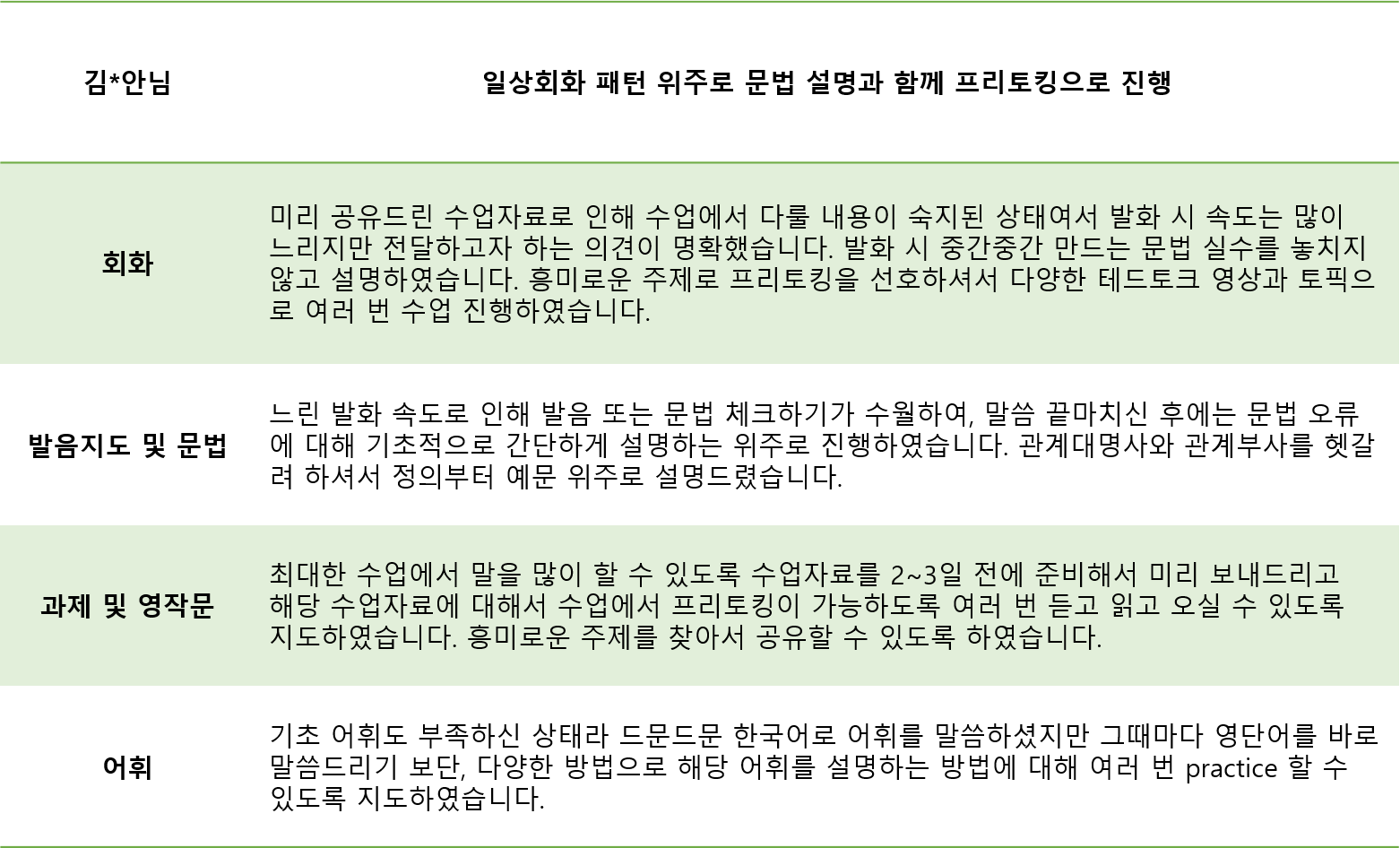

![동탄영어 DTE] 듣고, 말하고, 쓰기 위한 패턴연습(76) - 복합관계부사 however가 이끄는 양보의 부사절(1) : 어떻게? (방식) : 네이버 블로그 동탄영어 Dte] 듣고, 말하고, 쓰기 위한 패턴연습(76) - 복합관계부사 However가 이끄는 양보의 부사절(1) : 어떻게? (방식) : 네이버 블로그](https://mblogthumb-phinf.pstatic.net/MjAxOTA5MTFfMTg5/MDAxNTY4MTkyMDI1MTYy.X-7BbBsB3t5KTnFn-x51W1bXBKPBZqfZtM8StlHL70Ug.wyfZZSvm9xAP1v0Gj5wBFeSGSrNDaQ0hFGCgElIS1osg.JPEG.davidcmham/%EB%B3%B5%ED%95%A9%EA%B4%80%EA%B3%84%EB%B6%80%EC%82%AC_however%EA%B0%80_%EC%9D%B4%EB%81%84%EB%8A%94_%EB%B6%80%EC%82%AC%EC%A0%88_%EC%98%88%EB%AC%B84.jpg?type=w800)

![동탄영어 DTE] 듣고, 말하고, 쓰기 위한 패턴연습(77) - 복합관계부사 however가 이끄는 양보의 부사절(2) : 얼마나? (정도) : 네이버 블로그 동탄영어 Dte] 듣고, 말하고, 쓰기 위한 패턴연습(77) - 복합관계부사 However가 이끄는 양보의 부사절(2) : 얼마나? (정도) : 네이버 블로그](https://mblogthumb-phinf.pstatic.net/MjAxOTA5MTJfMTY5/MDAxNTY4MjQxMDI1NjEy.5WTz6rRaft2gwlHS8MEj6TLUmWTGEEmziCylsFmp0aog.HaHU5usSd9-ivXcS91XoBCK3kJwuv7wD55OHws9pwFMg.JPEG.davidcmham/%EB%B3%B5%ED%95%A9%EA%B4%80%EA%B3%84%EB%B6%80%EC%82%AC_however%EA%B0%80_%EC%9D%B4%EB%81%84%EB%8A%94_%EB%B6%80%EC%82%AC%EC%A0%88_%EC%98%88%EB%AC%B82.jpg?type=w800)
![관계부사 생략] 선행사, 관계부사를 생략하는 각각의 경우 - YouTube 관계부사 생략] 선행사, 관계부사를 생략하는 각각의 경우 - Youtube](https://i.ytimg.com/vi/ZaluzPdIq2Q/maxresdefault.jpg)

.png?type=w800)



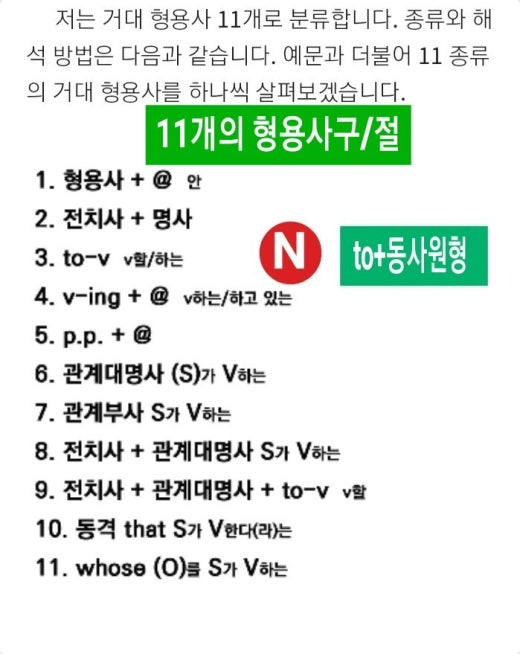

.jpg?type=w800)
![관계대명사 vs 관계부사] 차이점 표로 간단하게 한쪽 정리! (관계대명사와 관계부사의 뒷부분 차이) - YouTube 관계대명사 Vs 관계부사] 차이점 표로 간단하게 한쪽 정리! (관계대명사와 관계부사의 뒷부분 차이) - Youtube](https://i.ytimg.com/vi/VLRIyVpMWek/hq720.jpg?sqp=-oaymwEhCK4FEIIDSFryq4qpAxMIARUAAAAAGAElAADIQj0AgKJD&rs=AOn4CLCFAH_sp7q7t9IyuEhQCDafBxT7KA)


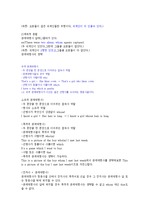
Article link: 관계부사 예문.
주제에 대해 자세히 알아보기 관계부사 예문.
- 영문법 (명사 문법 6: 관계부사) – 다양한 유학 이야기
- 관계부사 when, where, why, how + that 총정리! 특징과 사용법
- 관계부사 where, when, why, how – 꼬꼬의 영어 수업 – 티스토리
- 관계부사 how – 배워보자 영어
- [슬기로운 영문법생활]복잡한 관계부사 where,when,why 한번에 …
- 관계 부사 2 (why, how) – 하이파이 Toronto생활
- 관계부사 :: Take 2 – 티스토리
- 관계부사 where – 닥터토플공유함(닥무토)
더보기: blog https://c3.castu.org/danh-muc/lam-dep